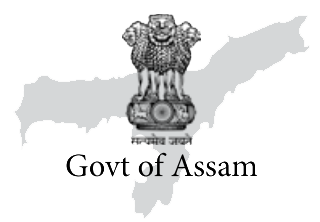Each year, residents of Gobindapur village in Karimganj district eagerly look forward to the four days of Durga Puja which are for them the busiest and most cherished of days. This unique occasion allows them to come together and celebrate since the village is located within the fenced area along the Indo-Bangla border.
“Being separated from mainland India does not stop us from celebrating our biggest festival. During Durga Puja, people of the village irrespective of caste, creed, religion come forward and work hand-in-hand to make it successful,” Bipul Namasudra, secretary of Gobindapur Sarbajanin Durga Puja committee, told Asom Barta.
The border village has a total of 44 households out of which 42 are Hindus while the remaining two are Muslims.
Starting from setting up of pandals to their decoration or even the bhog (ceremonial food) distribution, everything is done by the villagers, “Not only pandals, but the village is decorated with lights during the puja. People here do everything with enthusiasm,” Namasudra added.
The Gobindapur village claim that they have been celebrating this puja for over 150 years now. “Every year, thousands of people visit the village to seek blessings from Maa and this year, too, over 3,000 people visited the pandals. All were served with Khiduchi bhog prasad,” he informed this reporter, adding, “Mangal Aarti (ceremonial prayer) was also held every evening.”
Namasudra is grateful to the Border Security Force (BSF) for its support in organising the puja, “BSF men help us with financial donations, drinking water facilities, construction and decoration materials, etc.”
However, the most important support BSF extends to the villagers is by keeping the border gates open. On normal days, the gates are open till 7pm. But during the puja, the gates were kept open till 9 pm.

Many of the families in Gobindapur village are from the fishing community. Their economic condition is challenging. “It is solely due to Maa’s divine blessings that we continue the Durga Puja tradition initiated by our ancestors,” Namasudra told this newsletter.
Mohit Chakraborty, the priest, is a happy man. “I have been performing the puja here for 15 years. I must say that people do it with devotion and dedication. Despite challenges like time schedule and communication issues, people here give their best in serving the goddess.”
In another village, approximately 25 km away from Gobindapur, the spirit of celebration is equally strong. The lone Durga Mandir of the Manikpur village stands proudly on the no-man’s land where the 156th year of Durga Puja was recently celebrated.
Apu Malakar (48), a resident of Manikpur said, “This temple was established by the ancestors of Narendra Malakar, who happened to be one of my relatives. Till 1970, the puja was held under the leadership of Narendra. After his death, the responsibility was handled by his younger brother, Hriday Ranjan Malakar, who was also the last descendant of the family. But after his death in 1994, the puja came to a halt.”
Malakar, who is also the president of the Durga Bari Committee, said that due to negligence over the years, the temple was lost to dense green covers of bushes and trees. “The area where the temple is located is on the border. In the year 2008, it came under fencing and BSF camps were built. One fine day, we were called by BSF officials who wanted to know more about the area. When we told them that there used to be a temple inside it, they joined us in finding and renovating it,” he informed this reporter.
“The temple was in a state of disrepair. BSF helped the villagers renovate it. Since then, we have restarted the puja in the temple,” Malakar recollected.
“Even if there is a fence, there is no obstacle. Partition did not dampen our enthusiasm. This year, too, we celebrated the puja,” Malakar said.














